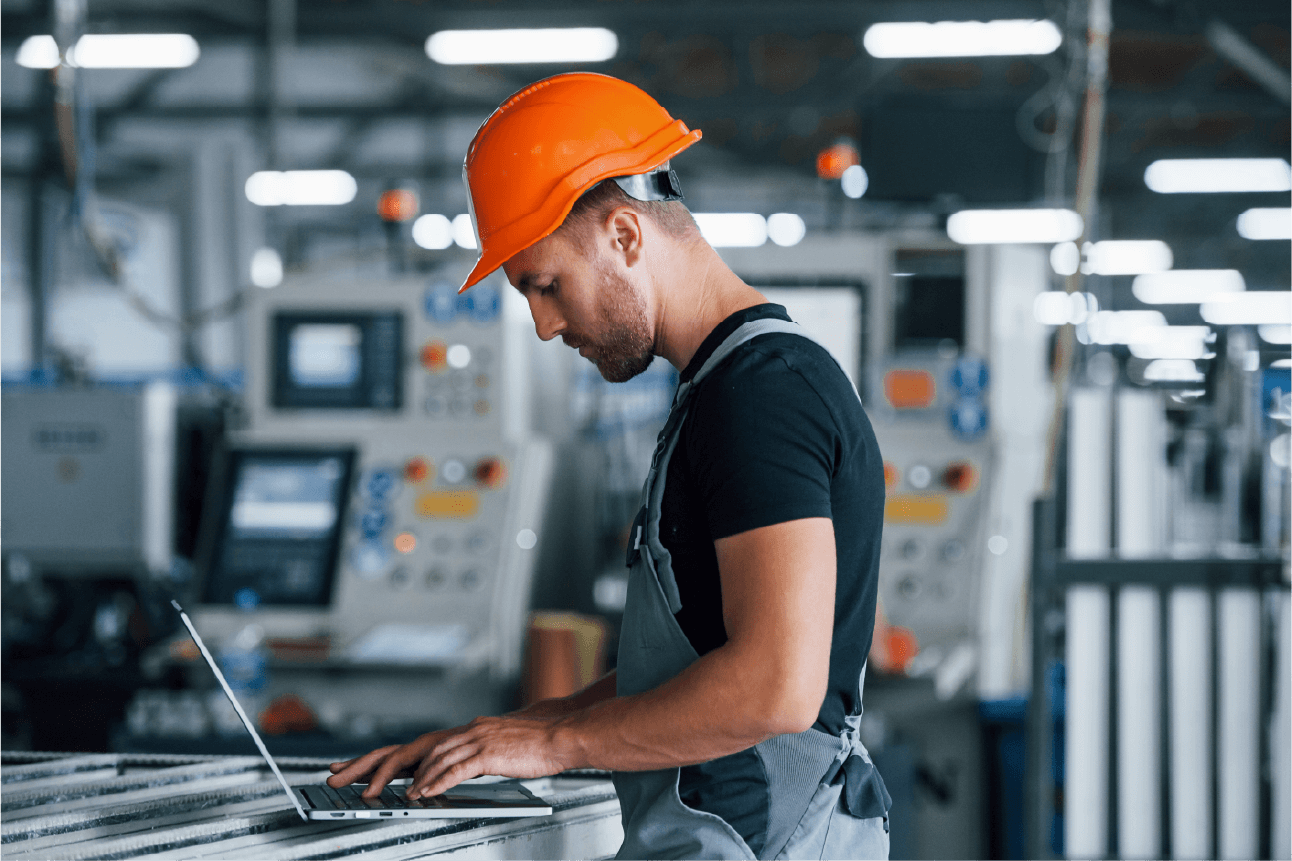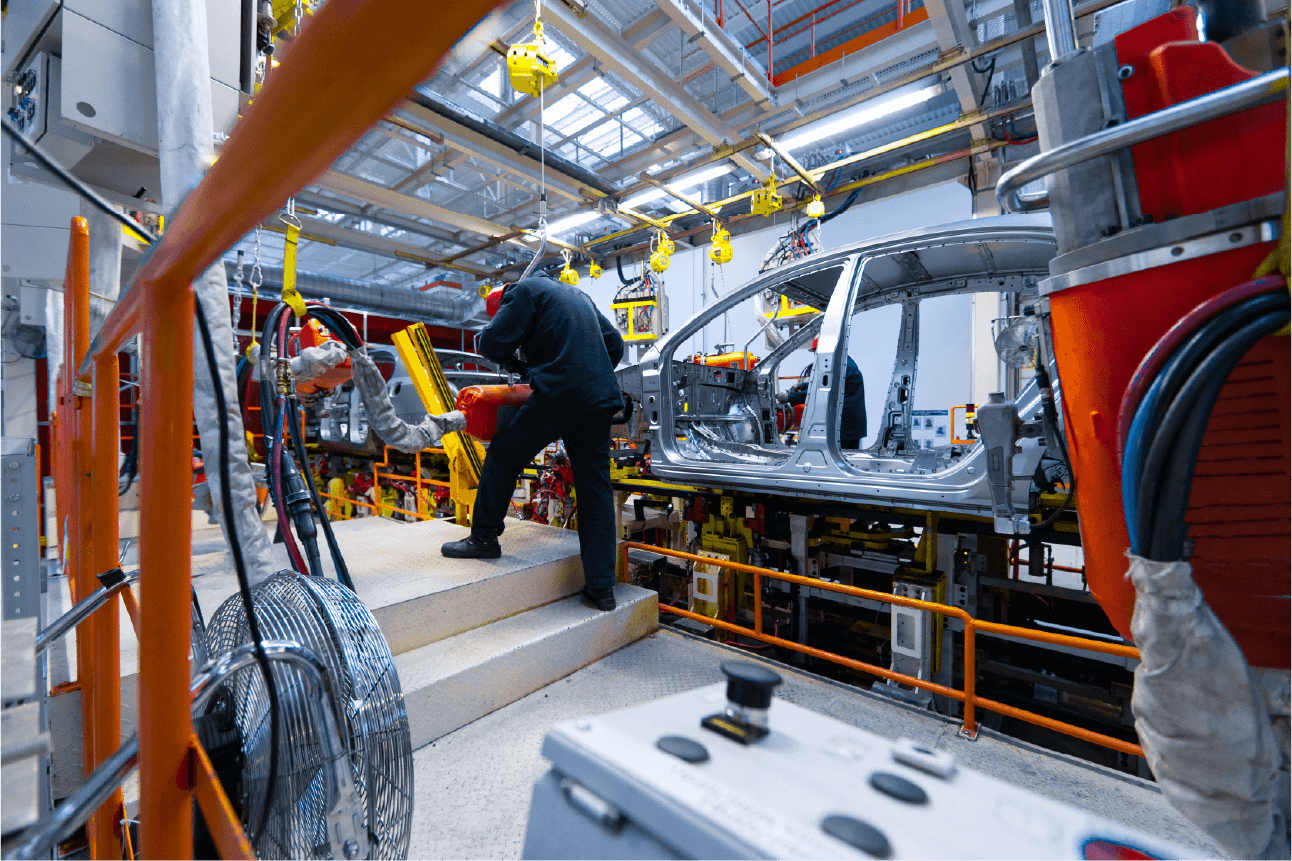The manufacturing workforce is undergoing a transformation— the integration of Artificial Intelligence (AI) into the workforce is not just a trend; it represents a fundamental shift in how industries operate.
Far from replacing human workers, AI is tapping the potential to augment human capabilities, making tasks easier and empowering teams to focus on higher-value work.
Companies are tapping into AI's power not just to automate tasks, but to create smarter, more efficient processes. For quality control managers and manufacturing engineers, this partnership between AI and humans presents a chance to enhance their operations.
Through tools like LooprIQ Inspect and LooprIQ Verify, AI can assist in reducing defects and verifying product assembly, offering a glimpse into how AI-human collaboration can drive growth and success across industries.
What Is Collaborative Intelligence?
Collaborative Intelligence refers to the harmonious interaction between human intelligence and AI systems. Unlike traditional automation, which often replaces human roles, collaborative artificial intelligence enhances human capabilities by leveraging AI's strengths in data processing and analysis. This partnership allows for improved decision-making and problem-solving, ultimately transforming the workforce.
In essence, AI collaboration is about creating an environment where both humans and machines contribute their unique strengths. While AI excels at processing vast amounts of data quickly, humans bring emotional intelligence, creativity, and critical thinking to the table.
With AI’s support, tasks such as quality control inspections and assembly line verification can be faster, more accurate, and more consistent—ultimately leading to reduced costs, improved product quality, and greater workforce satisfaction. This AI-human collaborative approach is crucial for fostering an innovative workplace that adapts to changing demands.
Role of AI in the Workforce
AI is being harnessed into many aspects of the workforce, transforming industries by automating repetitive tasks, enhancing decision-making, and improving efficiency across the board.
For example, AI can automate repetitive tasks like data entry or performing basic quality inspections, allowing human workers to concentrate on more strategic and complex responsibilities. In manufacturing, AI-powered tools such as Loopr IQ Inspect are revolutionizing quality control by using advanced visual inspection to detect defects with precision, significantly reducing wastage and operational costs.
Additionally, AI enables faster analysis of production data to identify patterns, predict equipment failures, and optimise workflows, leading to increased productivity and reduced downtime. These targeted applications of AI help manufacturers achieve measurable outcomes and stay competitive in a rapidly evolving industry.
Why Humans Are Still Essential?
Despite the power of AI, there are certain areas where humans will always be essential. While AI can process data and execute tasks with great efficiency, there are critical skills that AI simply cannot replicate:
Emotional Intelligence
AI may excel in logic but it lacks the ability to understand human emotions in the way people can. This makes humans irreplaceable in roles requiring empathy, such as leadership, customer service, and team management.
Critical Thinking and Creativity
While AI is capable of spotting trends in data and providing recommendations, it lacks human-like critical thinking and creative abilities. Humans are essential for coming up with new ideas, devising creative solutions to complex problems, and thinking outside the box.
Complex Decision-Making
Although AI can help with decision-making, it cannot make nuanced judgments that take into account subjective factors or moral considerations. Human intervention is still required to handle complex decision-making keeping the context and impact on people and society in mind.
By combining human creativity with AI's analytical capabilities, organizations can adapt to a more innovative and productive environment.
Benefits of AI-Human Collaboration
The advantages of AI-human collaboration are numerous:
Improved Productivity
By automating repetitive tasks and providing real-time feedback, AI allows us to focus on tasks that require creativity and problem-solving. This leads to higher productivity across all levels of the organization.
Faster Problem-Solving
AI can process vast amounts of data in a fraction of the time it would take a human, allowing teams to solve problems more quickly and with greater accuracy.
Innovation Through Collaborative Intelligence
AI-human collaboration results in a perfect blend of efficiency and creativity. AI’s data-driven insights can lead to innovation in product development, marketing strategies, and operational processes, while human creativity ensures that those innovations are implemented in meaningful ways.
Real-World Examples of Collaborative Intelligence
The impact of AI-human collaboration is already being felt across several industries:
Collaborative Intelligence in Healthcare
AI-assisted diagnostics are helping doctors identify health issues faster and more accurately than ever before. By working alongside medical professionals, AI tools like imaging software can assist in diagnosing diseases such as cancer or cardiovascular conditions, enabling doctors to provide more timely and accurate treatments.
Collaborative Intelligence in Manufacturing
Cobots, or collaborative robots, are becoming more prevalent on production lines. These robots are intended to work alongside human operators, performing repetitive or hazardous duties while we focus on higher-level decision-making. Tools like Loopr IQ Inspect can detect structural issues in raw material before processing, saving cost and ensuring higher quality and fewer defects.
Collaborative Intelligence in Marketing
AI tools are helping marketers better understand consumer behavior and deliver personalized content. From targeted ads to customer service chatbots, AI is enhancing the way businesses engage with their audiences, improving both customer satisfaction and ROI.
Challenges in Implementing Collaborative Intelligence and How Loopr AI Can Be of Help?
While the potential for AI-human collaboration is vast, there are challenges to overcome.
Some employees may fear that AI will replace their jobs, leading to resistance in adopting AI technologies. However, by positioning AI as a tool to augment human capabilities rather than replace them, companies can ease these concerns and foster a more positive attitude towards AI.
AI technology requires a certain level of technical proficiency. To ensure a smooth integration, organizations must invest in their workforce for upskilling for AI.
As AI becomes more integrated into the workforce, ethical concerns surrounding data privacy and security must also be addressed. Companies must ensure that AI systems comply with data protection regulations and are transparent in their use of data.
Loopr AI can assist organizations in addressing these challenges by providing user-friendly tools like Loopr IQ Inspect and Loopr IQ Verify to enhance quality control and empower employees by streamlining processes without replacing their roles.
How Organizations Can Foster AI-Human Collaboration?
To successfully implement collaborative intelligence within their operations, organizations should consider these strategies:
Upskilling Employees to Work with AI: Providing training programs ensures that employees feel confident using new technologies.
Cultivating a Culture of Innovation and Openness: Encouraging experimentation fosters an environment where employees feel safe exploring new ideas.
Leveraging AI Tools to Augment Human Capabilities: Tools like Loopr's visual inspection systems enhance human capabilities rather than replace them.
By focusing on these strategies, organizations can effectively navigate the complexities of integrating AI into their workflows while maximizing the potential of their workforce.
Future of Work with Collaborative Intelligence
Looking ahead, the future of work will be shaped by collaborative intelligence. Trends such as the rise of the AI-Augmented Workforce indicate a future where employees work alongside advanced technologies to enhance productivity.
Furthermore, developments in Generative AI will continue to redefine job roles across sectors. As industries evolve with these advancements, organizations must remain adaptable and open-minded about integrating collaborative intelligence into their operations. The future of work will undoubtedly be characterized by a seamless blend of human creativity and machine efficiency.
Conclusion
The partnership between AI and humans has the potential to reshape the workforce, driving innovation, efficiency, and growth across industries. By embracing collaborative intelligence, companies can empower their workforce, enhance productivity, and foster a culture of creativity and innovation.
The future of work is not about AI replacing humans—it’s about AI and humans working together to unlock new possibilities and build a better tomorrow.
FAQ
How can AI and humans work together effectively?
AI and humans work best when their strengths complement each other. AI handles repetitive, data-heavy tasks, while humans provide critical thinking, emotional intelligence, and creativity. By working in tandem, both can achieve better results than either could alone.
What are the benefits of AI-human collaboration?
The benefits include improved productivity, faster problem-solving, and innovation through the combined strengths of AI and human workers. AI allows humans to focus on high-value tasks, improving overall workforce performance.


%201.svg)

.svg)




.png)
%202.jpeg)
